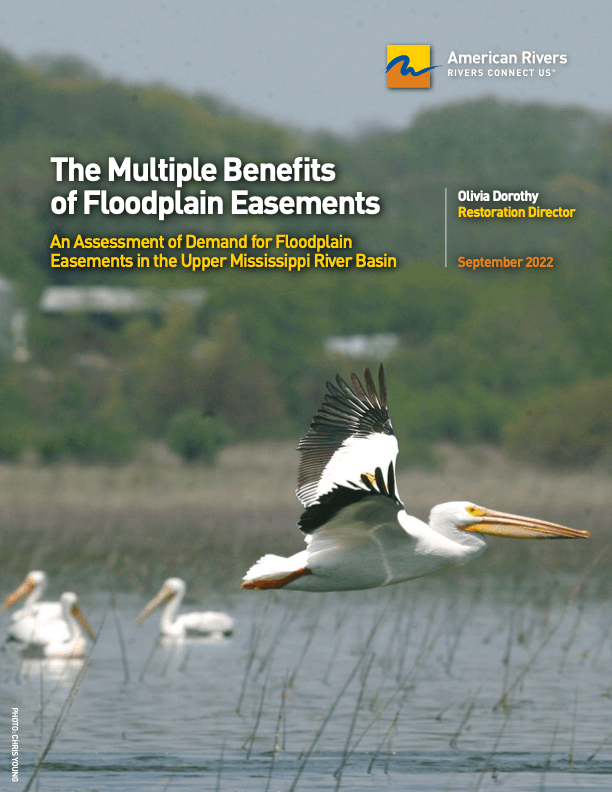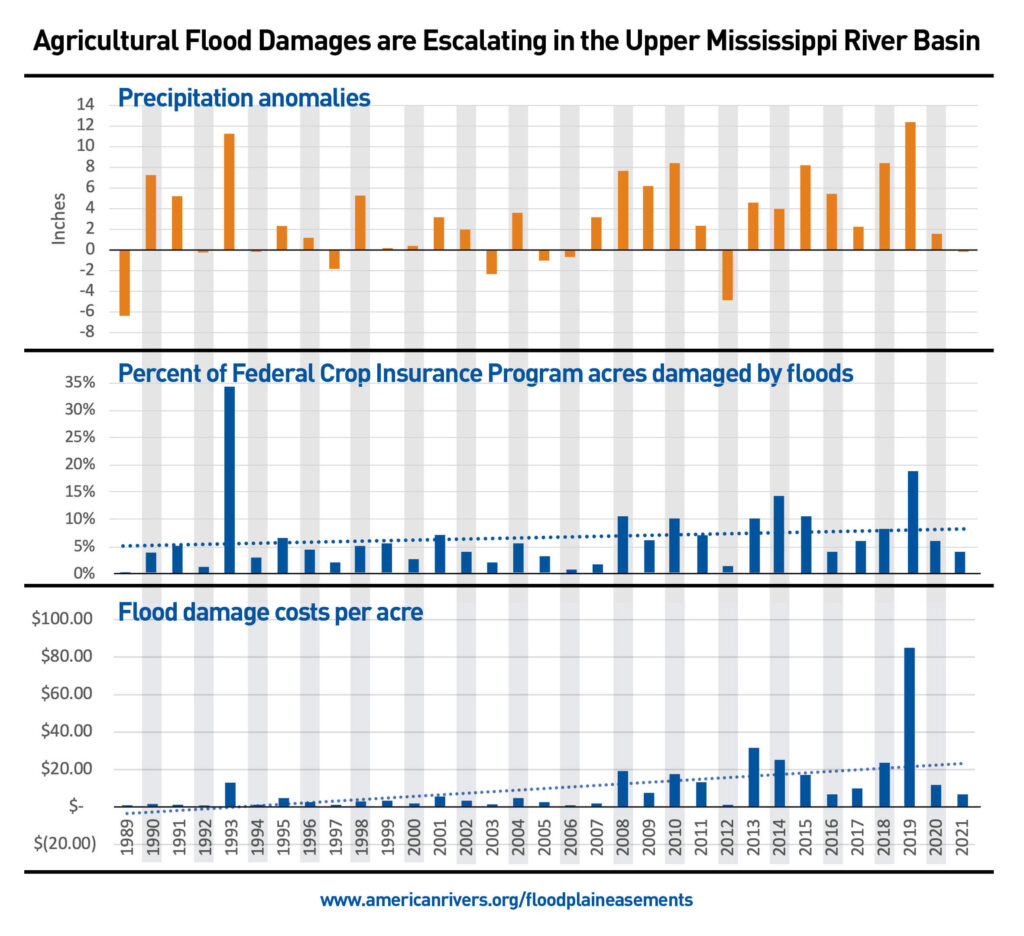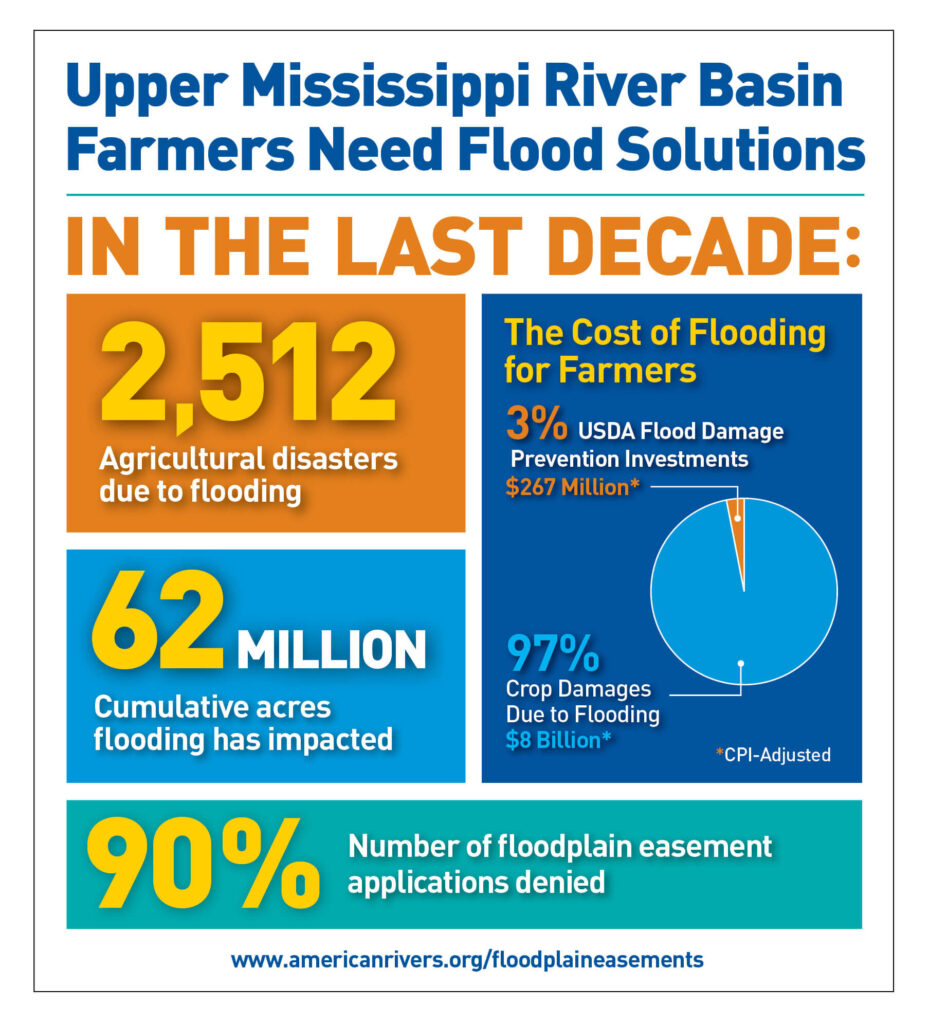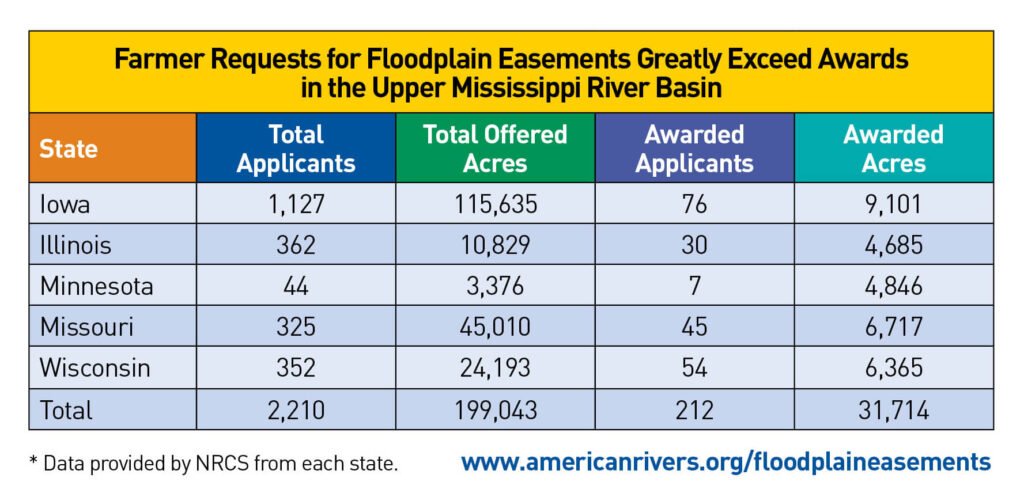The Multiple Benefits of Floodplain Easements

AN ASSESSMENT OF DEMAND FOR FLOODPLAIN EASEMENTS IN THE UPPER MISSISSIPPI RIVER BASIN

Floodplain easements are a land-management strategy that compensates landowners for permanently conserving flood-prone land. Floodplain easements provide multiple benefits, including storage of floodwater on the land, wildlife habitat, improved water quality and more.
USDA floodplain easements and flood damage-reduction investments are made through the Emergency Watershed Protection (EWP) Program, the EWP Program – Floodplain Easement Program (EWPP-FPE) and the Watershed Protection and Flood Prevention Program (WFPO) of the Natural Resources Conservation Service (NRCS).
In the Upper Mississippi River Basin (UMRB), demand for flood assistant is very high, but these programs do not receive consistent, annual funding. Many years, Congress makes no funds available in the UMRB for flood damage reduction projects of any kind, despite the recurring costs of damages from flood and excess rain/moisture. The cost of damages from flood and excess rain/moisture ranks second only to drought in the UMRB, and these damages are escalating due to climate change.
Across the nation, flooding has caused $59.2 billion (CPI-adjusted) in damages over the last decade. Over that same period, farmers enrolled in the Federal Crop Insurance Program (FCIP) reported $29 billion in damages (CPI-adjusted) caused by floods and excess moisture, with the UMRB states representing 34 percent of those damages. The cost of flooding impacts on the nation and in the UMRB is rising as precipitation increases, and damages are expected to continue to escalate as climate-change impacts intensify.

Despite the significant and escalating amount of flood damage to crops on a regular basis, the EWPP and WFPO are only sporadically funded in the UMRB. Between 2011 and 2020, the USDA only invested $267 million (CPI-adjusted) into these two flood damage-reduction programs in the UMRB, while agricultural flood and excess rain/moisture damages exceeded $8 billion (CPI-adjusted).

In addition to saving farmers and taxpayers money, enrolling more acres in floodplain easements, and investing more in USDA flood risk reduction programs to plan floodplain easement and restoration would
- Promote resilient local economies by investing in floodplain projects that are rich in ecosystem services,
- Increase options for farmers to enroll acres that are routinely damaged by floods into a conservation program,
- Increase flood water storage in areas that are seeing significant rises in flood damages,
- Reduce nitrogen and phosphorus pollution in the Mississippi River by using floodplain restoration as a downstream water filtration tool,
- Prevent and slow the extinction of freshwater and floodplain-dependent species that are more at risk than marine and terrestrial species,
- Expand the use permanent easements that reduce long-term federal obligations, and
- Meet farmer demands for a more functional floodplain easement program.

The USDA Floodplain Easement Program needs to be reformed to enroll easement acres annually and make more substantial investments in flood damage reduction. To do this, Congress needs to include the following reforms in the 2023 Farm Bill
- Fund flood damage reduction and floodplain easement programs annually through USDA – Natural Resources Conservation Service.
- Establish a tracking and reporting system for floodplain easements within the Conservation Effects Assessment Project.
- Order USDA to collaborate with economic experts to better understand and quantify the ecosystem services provided by functional floodplains.
- Ensure floodplain easements are not subject to land-tenure requirements.
- Order USDA to collaborate with the US Army Corps of Engineers and the Federal Emergency Management Agency to prioritize investments in areas subject to recurring flood damages.
- Order USDA to develop Best Management Practices to reduce flood damages in the agricultural sector.
- Order USDA to improve guidance on floodplain restoration to meet multiple natural resource challenges.
